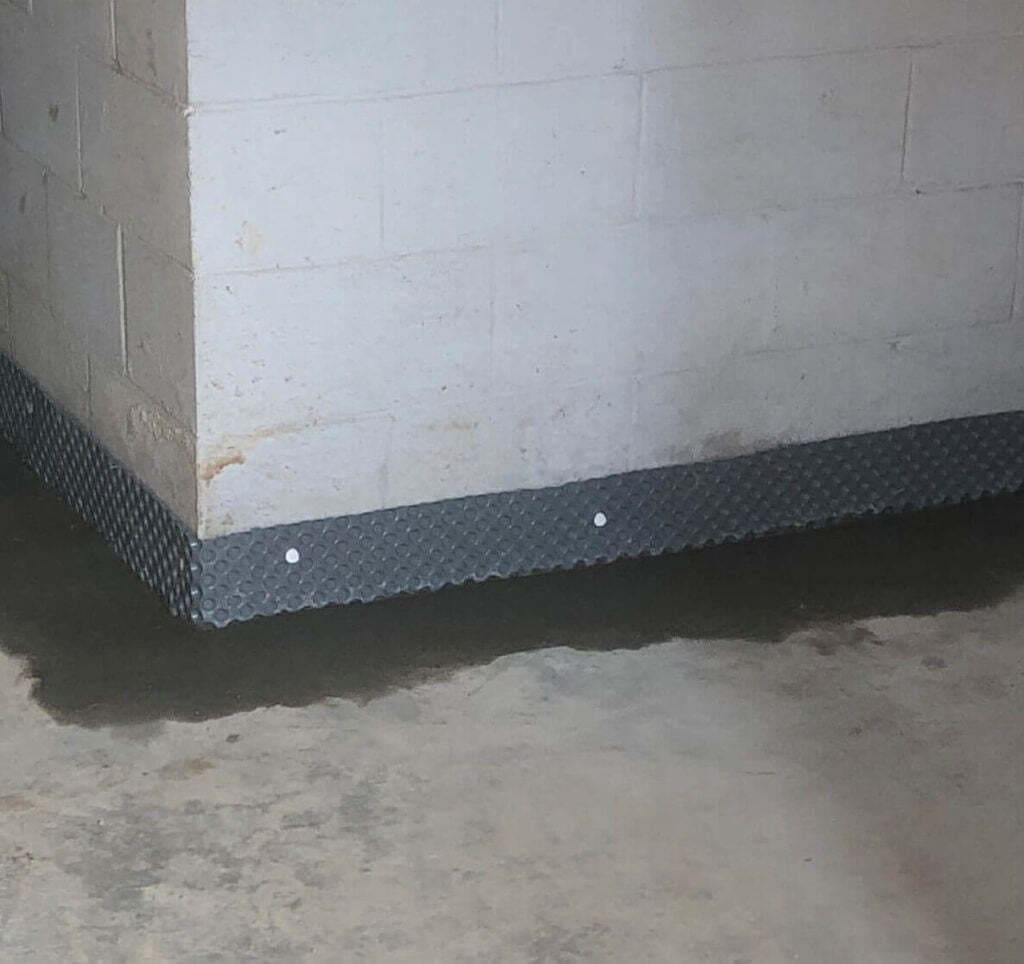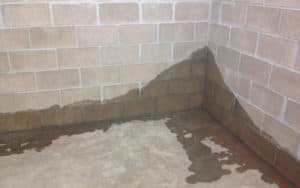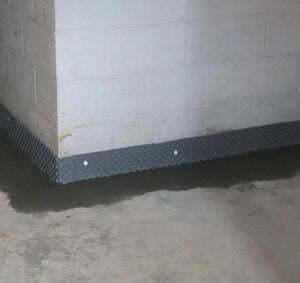
Originally posted 4/9/20, updated 12/14/22
It’s something no homeowner wants to see: water in your basement. You can’t ignore it; okay, maybe you can, but you shouldn’t. Water causes foundation damage and mold growth, among other things. Left unchecked, your foundation will crack and decay, mold will form and pollute the air you breathe, and moisture will deteriorate the wooden structure that holds up your walls and flooring.
Acculevel repairs foundations and waterproofs basements and crawl spaces. We specialize in interior water drainage systems, and we’ve been installing these since our founding in 1996.
One question customers often ask is: “Why do you only do interior water drainage?” In reality, we do offer both types of drainage. We focus primarily on interior drainage because it is a permanent solution that appeals to more customers. But interior drainage may not be the best fit for you, so we're going to review both options. In this article, we’ll compare interior and exterior drainage costs, methodology, and impact to your home.
 This picture was taken by an Acculevel project advisor, during a routine free estimate appointment.
This picture was taken by an Acculevel project advisor, during a routine free estimate appointment.
Interior and exterior drainage systems have the same function: to collect water that is near your foundation and direct it away from your house. Water is naturally in the ground, surrounding your home. When it works its way through the soil to your house, it’s collected in the drainage channel. This channel then directs the water away from the house through a drain or discharge line.
When a new home is built, the construction company typically installs an exterior water drainage system. This is usually done in conjunction with some type of foundation mastic (a sealant that coats the exterior of the foundation walls). It is buried under the landscaping around your house, out of sight. This system keeps water outside your home, and does not require any maintenance on your part. It also does not infringe on the square footage available to you, inside your home.
This exterior system generally works reliably for 15-25 years, depending on external conditions. It has a limited life span, because it’s outside and subject to the whims of Mother Nature. A high water table, deterioration (as the product ages), your particular soil composition, and seasonal variations all have an impact.
There are two major issues that develop with an exterior drainage system.
The only way to fix an exterior water drainage system is to replace it. There’s no easy way to reach the drainage line because there’s 8+ feet of earth between you and the line. Likewise, if the mastic or sealer is failing, the outside of the foundation wall has to be excavated to expose the damaged area.
Replacing exterior drainage is a messy, time consuming process that includes a full excavation of the original system. The contractor might need to dig up to 10 feet down, creating a trench all the way around the house, so they can fully expose the system. The area around your house will need to be cleared for 15-20 feet from the basement walls (to provide room for workers, equipment, and the soil that is excavated). In the process, everything in this area of your landscaping will be disrupted:
Once the new exterior drainage is installed, your house is once again in good shape for another 15-25 years. Most contractors installing exterior drainage do not offer a warranty, so we recommend closely reading the fine print for the exemptions and coverage.
Costs for this exterior installation range from $25,000-$35,000 and take several weeks to complete. Keep in mind, this price range may not cover all of your home’s surround, concrete replacement, or landscaping that may have to be re-installed or replaced.
There are a number of reasons to choose interior water drainage instead of exterior.
But there is one compelling reason why so many homeowners choose interior water drainage. The cost of interior drainage is dramatically less expensive. In the last 12 months, the average Acculevel customer paid $5700-$700 for basement waterproofing.

This picture was taken by an Acculevel crew member, after installation was completed. The darker concrete is the new floor poured on top of the water drainage. The dimple board is the lighter grey band at the base of the wall.
I would like to tell you there are zero downsides to interior water drainage, but that wouldn’t be honest. And you’re here for a fair and accurate comparison, so: the primary drawback to interior water drainage is that it’s inside your home. This means you can see it, and occasionally you have to perform some maintenance on it. Sump pumps have a manufacturer’s warranty of 1-5 years, depending on the model.
The installation process can be noisy, and there is some mess associated with it. The floor will be broken up around the perimeter, and this concrete demolition does generate some dust. Once the track is installed, a new floor is poured on top of it. You could lose a wee bit of space between the dimple board and floor, but this is usually less than an inch.
| Dimple board: a polyurethane sheet that fits between the wall and the floor. This forms a protective barrier between the two, and creates a gap of ¼-½ inch. |
Interior water drainage that can’t be installed on a footer is also more expensive. However, it is still substantially less expensive than exterior drainage. If you would like more details about the interior installation process and the possible expenses, we have an article that explores this more fully.
The answer to this question depends on you, and what your plans are for your home.
Exterior drainage may be a better fit if you:
Interior drainage is a better option if you:
Once you have determined which option you prefer, you need to find an experienced contractor. Before you sign a contract for any service, always verify the company is reputable, insured, and accredited by the Better Business Bureau.
If you live in Indiana or the surrounding states, contact Acculevel. An experienced project advisor will evaluate the areas of concern and recommend the best course of action for you, to keep your home strong and healthy for years to come.
[DISPLAY_ULTIMATE_SOCIAL_ICONS]